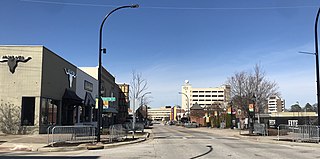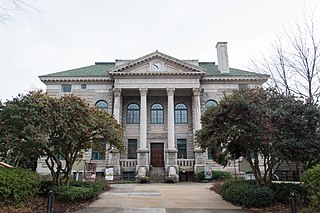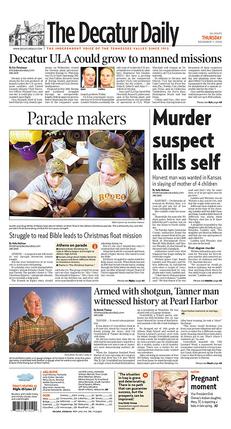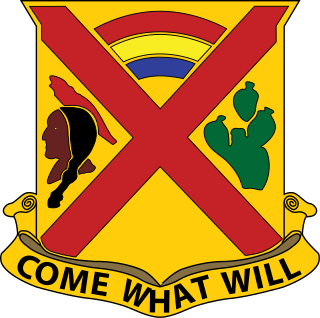
Seminole County is a county located in the southwestern corner of U.S. state of Georgia. As of the 2020 census, the population was 9,147. The county seat is Donalsonville.

Decatur is the largest city and county seat of Morgan County in the U.S. state of Alabama. Nicknamed "The River City", it is located in northern Alabama on the banks of Wheeler Lake, along the Tennessee River. The population in 2020 was 57,938.

Bainbridge is a city in Decatur County, Georgia, United States. The city is the county seat of Decatur County. As of the 2020 census, the city had a population of 14,468.

Decatur is a city in, and the county seat of, DeKalb County, Georgia, United States, part of the Atlanta metropolitan area. With a population of 24,928 in the 2020 census, the municipality is sometimes assumed to be larger since multiple ZIP Codes in unincorporated DeKalb County bear Decatur as the address. The city is served by three MARTA rail stations. The city is located approximately five miles northeast of Downtown Atlanta and shares its western border with both the city of Atlanta and unincorporated DeKalb County. The Druid Hills neighborhood is to the northwest of Decatur.

The Battle of Atlanta was a battle of the Atlanta Campaign fought during the American Civil War on July 22, 1864, just southeast of Atlanta, Georgia. Continuing their summer campaign to seize the important rail and supply hub of Atlanta, Union forces commanded by William Tecumseh Sherman overwhelmed and defeated Confederate forces defending the city under John Bell Hood. Union Major General James B. McPherson was killed during the battle, the second-highest-ranking Union officer killed in action during the war. Despite the implication of finality in its name, the battle occurred midway through the Atlanta campaign, and the city did not fall until September 2, 1864, after a Union siege and various attempts to seize railroads and supply lines leading to Atlanta. After taking the city, Sherman's troops headed south-southeastward toward Milledgeville, the state capital, and on to Savannah with the March to the Sea.

The Tennessee River is the largest tributary of the Ohio River. It is approximately 652 miles (1,049 km) long and is located in the southeastern United States in the Tennessee Valley. The river was once popularly known as the Cherokee River, among other names, as the Cherokee people had their homelands along its banks, especially in what are now East Tennessee and northern Alabama. Additionally, its tributary, the Little Tennessee River, flows into it from Western North Carolina and northeastern Georgia, where the river also was bordered by numerous Cherokee towns. Its current name is derived from the Cherokee town, Tanasi, which was located on the Tennessee side of the Appalachian Mountains.
The history of Georgia in the United States of America spans pre-Columbian time to the present-day U.S. state of Georgia. The area was inhabited by Native American tribes for thousands of years. A modest Spanish presence was established in the late 16th century, mostly centered on Catholic missions. The Spanish had largely withdrawn from the territory by the early 18th century, although they had settlements in nearby Florida. They had little influence historically in what would become Georgia.

John Brown Gordon was an attorney, a slaveholding plantation owner, general in the Confederate States Army, and politician in the postwar years. By the end of the Civil War, he had become "one of Robert E. Lee's most trusted generals."
The Battle of Decatur was a demonstration conducted from October 26 to October 29, 1864, as part of the Franklin-Nashville Campaign of the American Civil War. Union forces of 3–5,000 men under Brig. Gen. Robert S. Granger prevented the 39,000 men of the Confederate Army of Tennessee under Gen. John B. Hood from crossing the Tennessee River at Decatur, Alabama.

The Tennessee Valley is the drainage basin of the Tennessee River and is largely within the U.S. state of Tennessee. It stretches from southwest Kentucky to north Alabama and from northeast Mississippi to the mountains of Virginia and North Carolina. The border of the valley is known as the Tennessee Valley Divide. The Tennessee Valley contributes greatly to the formation of Tennessee's three legally recognized sectors.
The Spirit of America Festival is an outdoor Fourth of July celebration typically held over a period of two days at Point Mallard Park in Decatur, Alabama. Featuring a variety of traditional summer activities, the event is organized and staged by an all-volunteer board.

The Decatur Daily is a daily newspaper serving Decatur, Alabama and the Tennessee Valley in the North Alabama area of the United States. As of September 30, 2006, it had an average daily circulation of 20,824 and a Sunday circulation of 23,840. Along with The Anniston Star, it is one of only two family-owned daily newspapers remaining in Alabama.

The city of Atlanta, Georgia, in Fulton County, was an important rail and commercial center during the American Civil War. Although relatively small in population, the city became a critical point of contention during the Atlanta Campaign in 1864 when a powerful Union Army approached from Union-held Tennessee. The fall of Atlanta was a critical point in the Civil War, giving the North more confidence, and leading to the re-election of President Abraham Lincoln and the eventual dissolution of the Confederacy. The capture of the "Gate City of the South" was especially important for Lincoln as he was in a contentious election campaign against the Democratic opponent George B. McClellan.

Eugene Bondurant Sledge was a United States Marine, university professor, and author. His 1981 memoir With the Old Breed: At Peleliu and Okinawa chronicled his combat experiences during World War II and was used as source material for the Ken Burns PBS documentary The War (2007), as well as the HBO miniseries The Pacific (2010), in which he is portrayed by Joseph Mazzello.

The 2nd Alabama Cavalry Regiment was a cavalry regiment of the Confederate States Army during the American Civil War.

Albany, Alabama, also known as New Decatur, Alabama, was a city in Morgan County, Alabama, United States, situated immediately to the southeast of the city of Decatur near the Tennessee River. New Decatur/Albany existed as a city from 1887 until 1927, when it merged with the city of Decatur. Today, it exists as a neighborhood within the city of Decatur, and is on the National Register of Historic Places.
Events from the year 1820 in the United States.
Decatur Land Improvement and Furnace Company, Inc. was a company which engaged in a planned urban development in the state of Alabama in the late nineteenth century. On January 11, 1887, as Decatur, Alabama was still rebuilding from the destructive results of the war and the outbreak, the Decatur Land Improvement and Furnace Company, Inc., was founded by Southerners Eugene C. Gordon, C.C. Harris, and W.W. Littlejohn, and Northerners Hiram Bond and William E. Forest M.D. of New York. Together they and others invested $7.5 million toward purchase and development of 5,600 acres of land southeast of the city. The company formed a new city as a means of reinventing Decatur as a progressive manufacturing and transportation center following the war. They named their new city New Decatur and gave it the nickname "The Chicago of the South," referencing its status as a transportation hub, and as a marketing tool toward Midwesterners. New Decatur was designed as a planned community with the help of famed landscape architect Nathan Franklin Barrett.

State Square was the central square of antebellum Atlanta, Georgia. The original Atlanta Union Depot designed by Edward A. Vincent stood in the middle of the square. The square was bounded by Marietta Street on the northeast, Pryor Street on the northwest, Loyd Street on the southeast, and Alabama Street on the south. The square was surrounded by Atlanta's most important buildings including the hotels Atlanta, Trout House, and Washington Hall, the Atlanta Bank, retail stores, and warehouses.The area is now almost entirely taken up by parking lots and parking garages, with a portion occupied by the Georgia State University College of Education, MARTA rail line, and retail and office space lining the north side of Alabama Street.

The Georgia Hussars are a cavalry unit founded before the American Revolution that continues today as part of the Georgia National Guard. The Hussars served the State of Georgia as part of the Confederate States Army during the American Civil War, and after reconciliation served in Mexico, World War I, World War II, Korea, Vietnam, Desert Storm, Bosnia and Herzegovina, and The War on Terror.














